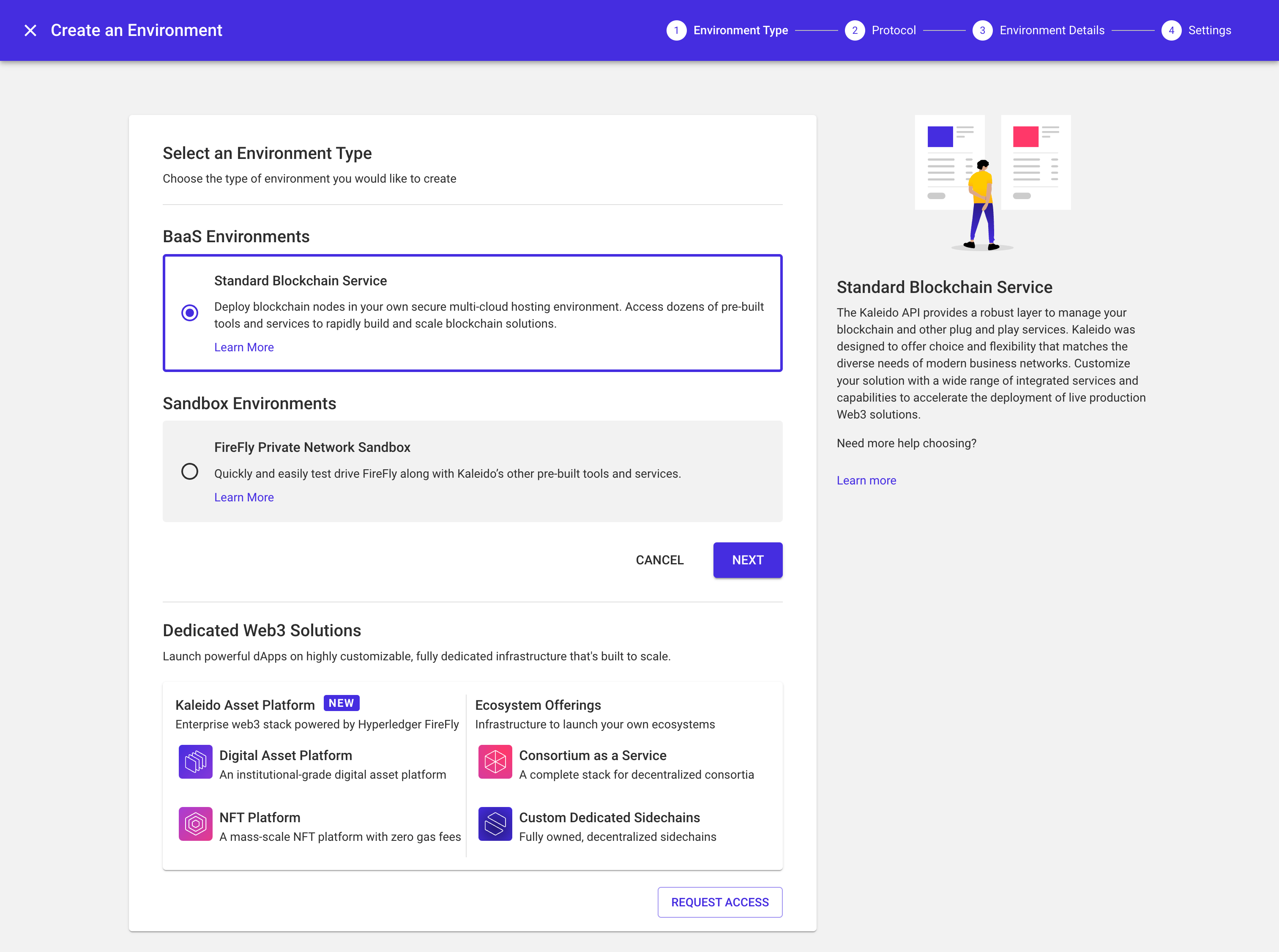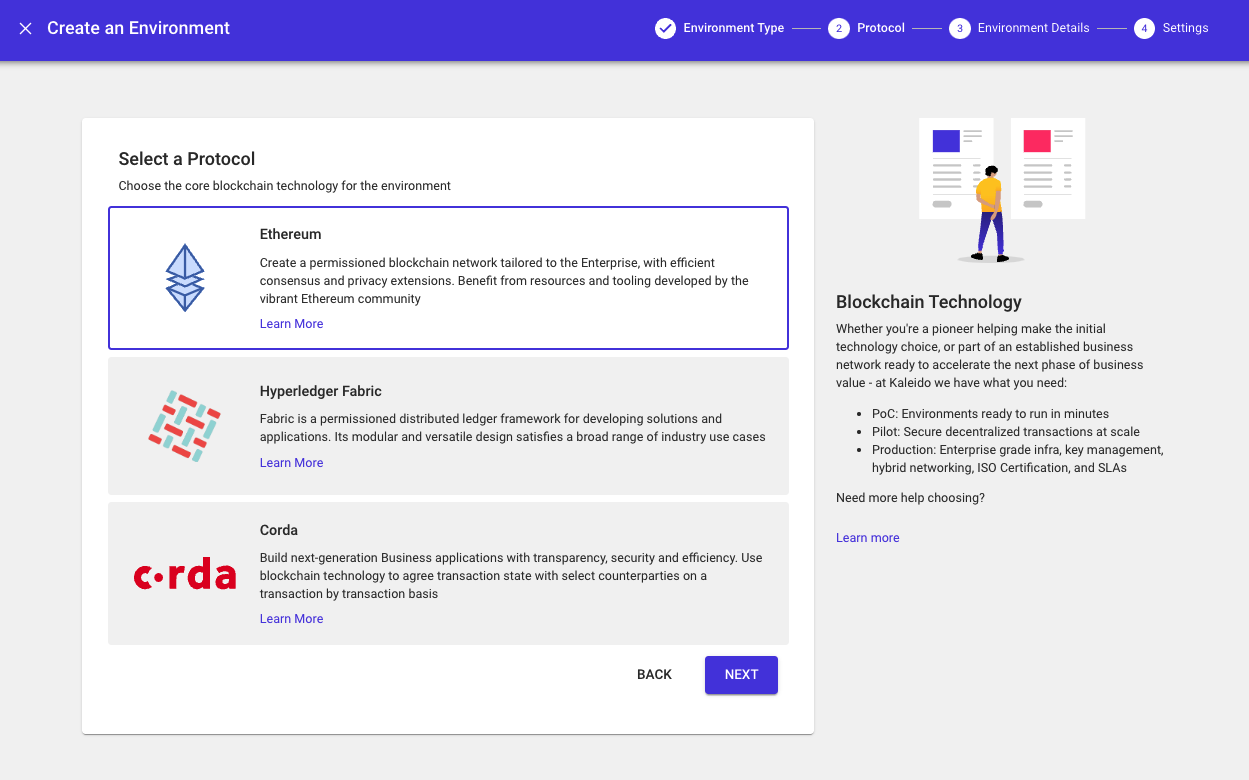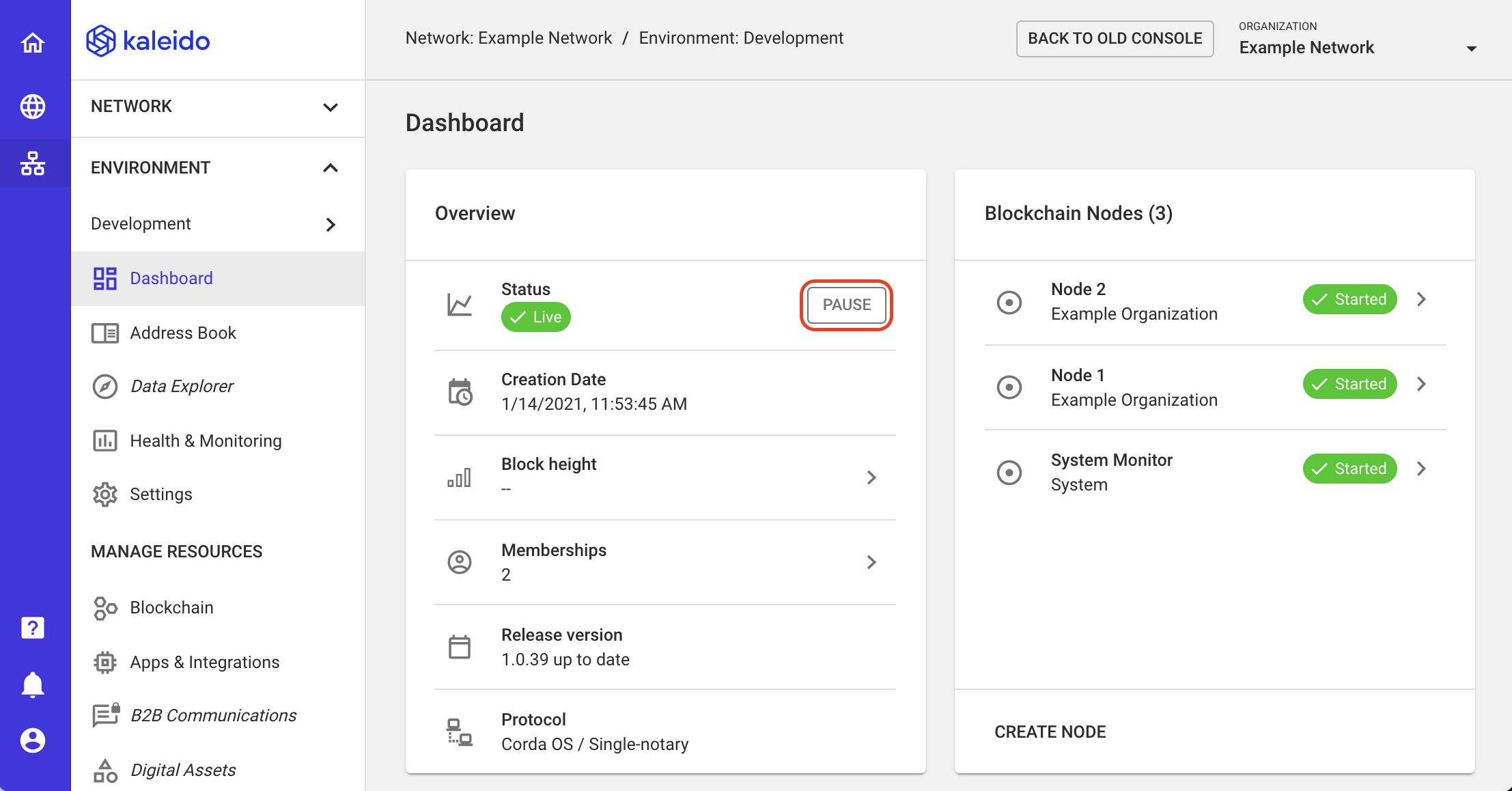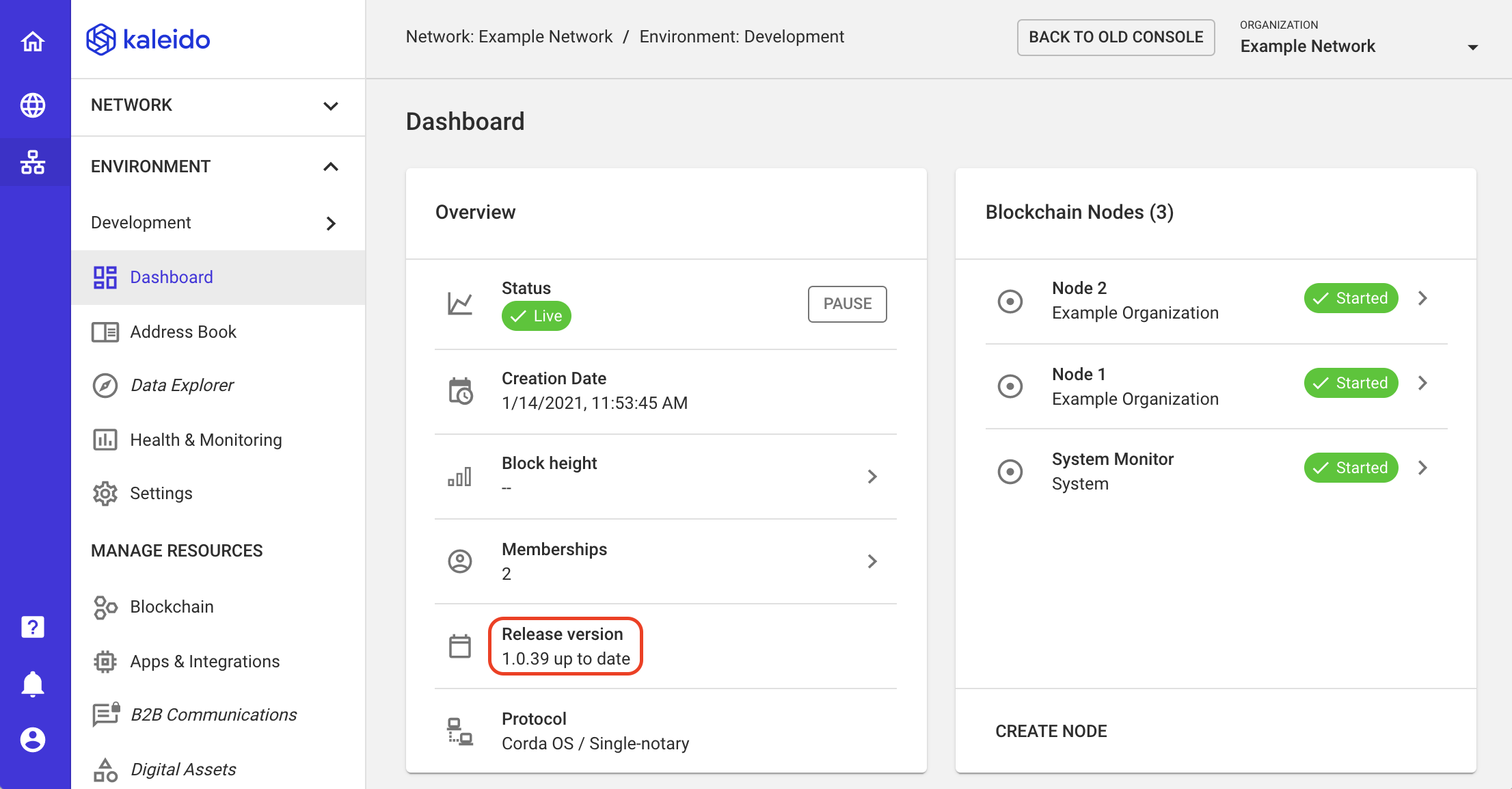Environments
Each Network can contain one or multiple environments containing the following elements:
- A firewall isolated network within which all resources run
- A permissioned blockchain, with its own genesis configuration
- The full-stack of services that make up your decentralized solution
Configuring the Blockchain

The first element of environment configuration is choosing the Type of your Environment. Kaleido provides the following environment types:
- Standard Blockchain
- Standard Blockchain + FireFly Supernodes
For more information about the FireFly offering, refer to the documentation here.

The second piece of environment configuration is to choose the enterprise blockchain protocol. The choices are:
- Enterprise Ethereum
- Hyperledger Fabric
- Corda OS
Learn more about protocol providers and consensus algorithms
Multi-region, multi-cloud environments

The deployment scheme for environments is either cloud-only or hybrid. A cloud-only deployment means that resources (nodes, services, etc.) are all created in a single deployment zone in AWS and Azure. A hybrid deployment model will allow for resources to be created both on-premise and in private cloud VPCs.
- If your current plan does not support hybrid, please contact us to learn more.
- Regions must be whitelisted into a consortium before being available in the environments of that consortium.
Protocol Settings

If you have elected for Enterprise Ethereum, you can choose between a wide selection of node clients - Hyperledger Besu, Geth, and Quorum - and their supported consensus algorithms.
- Geth is the hardened Go implementation of the core Ethereum node. Compatible with clique PoA consensus.
- Quorum is a fork of Geth offering support for private transactions through its "constellation" module. Compatible with Raft and Istanbul BFT.
- Hyperledger Besu is a modular Java-based client designed specifically for enterprise requirements. Besu also supports private transactions and is compatible with clique PoA and Istanbul BFT.

If you have elected for Corda, there is only a single choice:
- Corda OS with a managed notary. For more information on the Corda offering, please refer to the Corda protocol documentation or our Corda Quick Start Guide.
Pausing an Environment
Environments can be manually paused by clicking the Pause button on an environment's dashboard, then selecting Pause again from the sub-menu. The environment's status will temporarily show Pause_pending before changing to Paused.

If you did not make a request to pause your environment and are wondering how it might have reached that state, please read this FAQ article.
Resuming a Paused Environment
To wake an environment in the Paused state, click the Start button on an environment's dashboard, then select Start again from the sub-menu. The environment's status will temporarily show Resume_pending before changing to Live.
Upgrading an Environment
Your environment is eligible for an upgrade to a newer release if you see an orange circular icon with a white up-arrow next to your Release version when viewing the environment web-page. Click on the orange/white arrow icon and follow the pop-up instructions to complete an upgrade to the latest release.

To perform a hard fork upgrade of your environment so that your chain is configured with any newly available EIPs, refer to the steps here.
